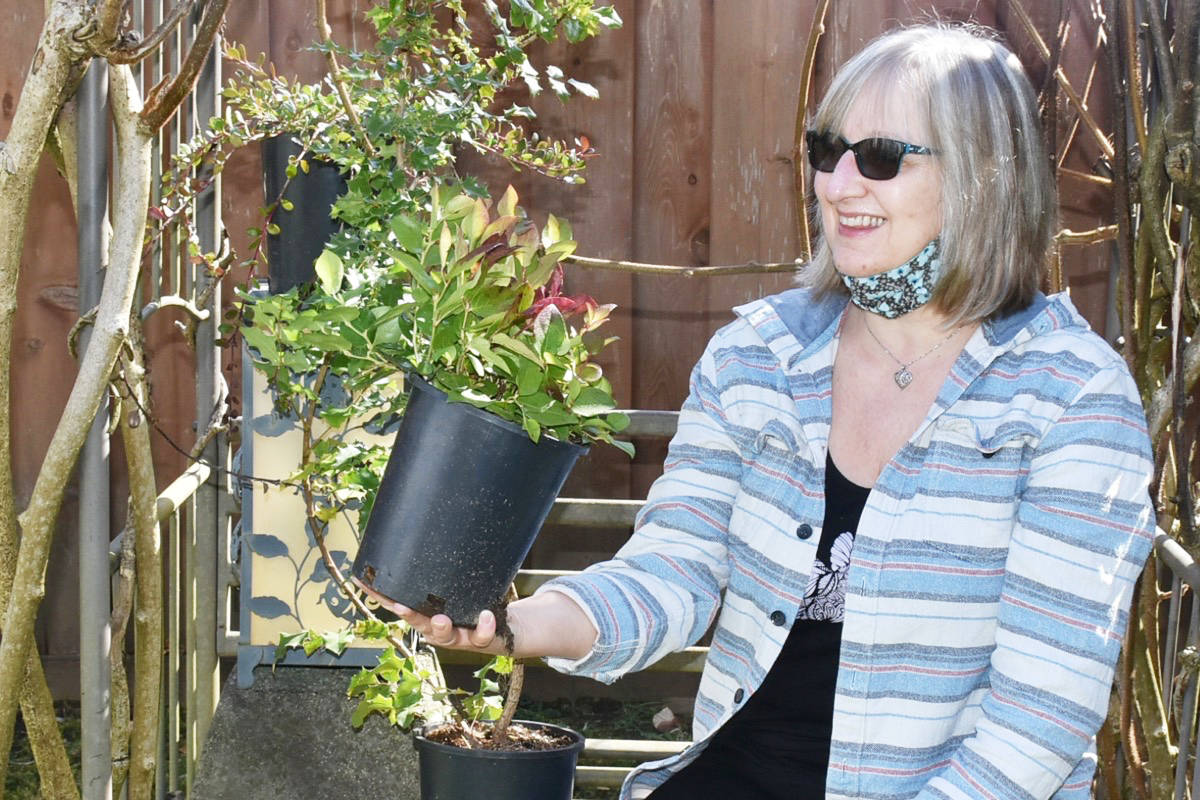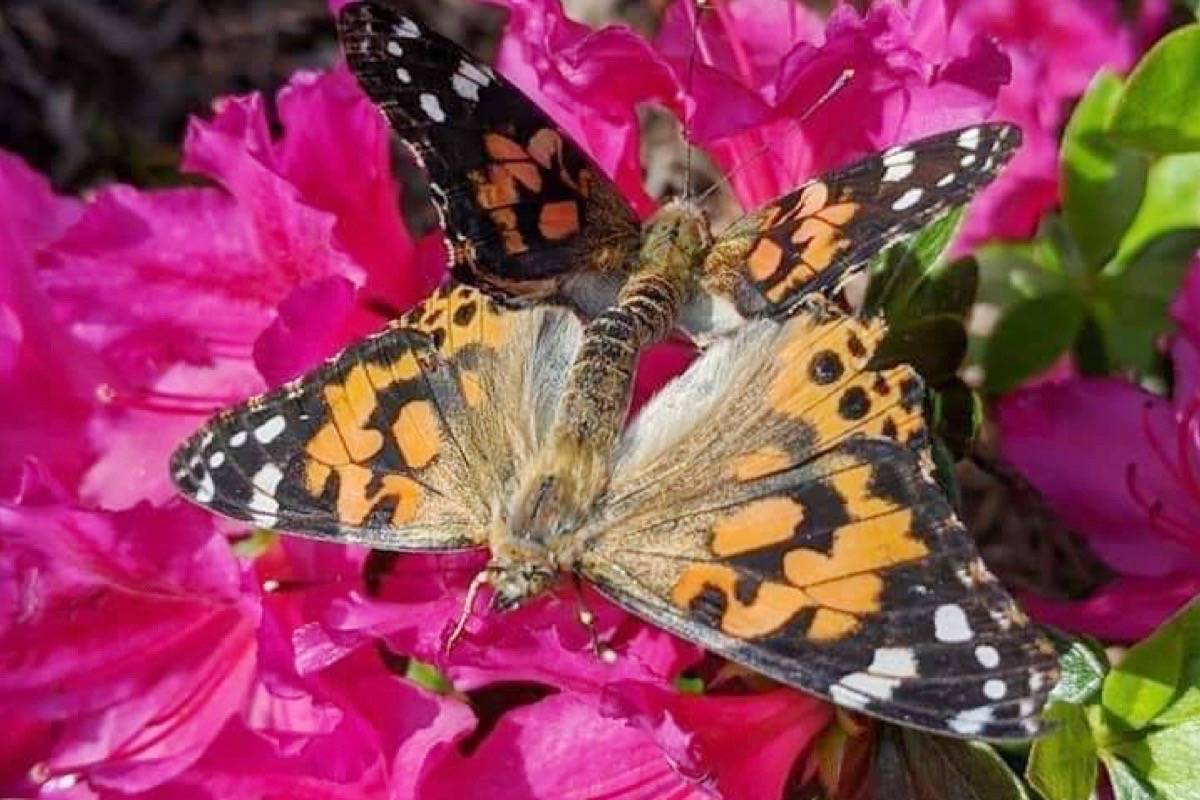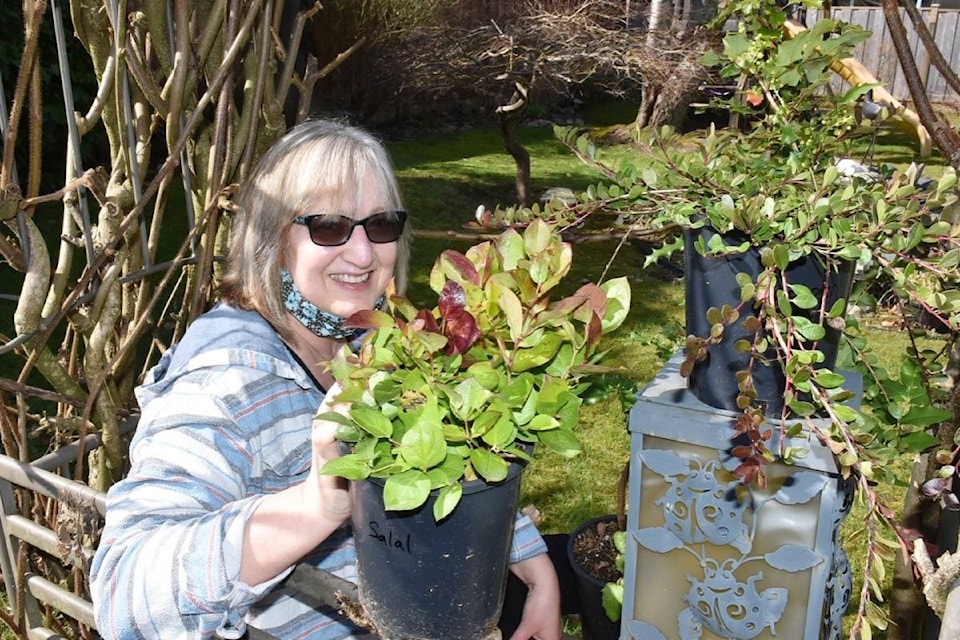Many people mistake the painted lady butterfly for a monarch butterfly, but Linda Peters knows the difference.
“It’s a local butterfly,” the avid gardener from Maple Ridge said of the painted lady, something she has just learned after volunteering to become a butterflyway ranger with the David Suzuki Foundation.
Monarchs, she explained, are a rarity on this side of the country.
A butterflyway ranger is somebody who helps to facilitate the planting of native plants and wild flowers to support pollinating insects – including butterflies and bees – in a community.
The Butterflyway Project was started in 2017 by the David Suzuki Foundation in five Canadian cities with the goal of creating butterflyways by planting at least a dozen pollinator patches in each community.
Now there are more than 1,000 butterflyway rangers in more than 400 communities across the country.
Peters knows she has a lot to learn.
READ MORE: The ‘most cosmopolitan’ of butterflies could migrate to B.C.
Basically, she said, there needs to be one host plant in a garden where the butterflies can lay their eggs and live, and a nectar plant for them to eat.
“If each street had one of those it would help to provide habitat,” explained Peters.
Host plants can include trees like willows, poplars, aspens, bitter cherry or cottonwood, she said. Nectar plants can include wild bergamot, yarrow, goldenrods, thistles, borage, or lavender.
As of 2000, there were 187 different species and 77 subspecies of butterflies, including skippers that are in the same insect family, identified in the province, wrote Crispin Guppy in a 2020 introduction to an article entitled The Butterflies of British Columbia in E-Fauna BC: Electronic Atlas of the Wildlife of British Columbia for the Geography Department at the University of B.C. It’s the largest amount in the country, Guppy wrote, noting the most critical threat to butterflies in B.C. is habitat loss and the use of pesticides.
According to Wildlife Preservation Canada, bees and butterflies are very important for the pollination of plants.
“Many native flowers are not pollinated by bees but by butterflies whose long proboscis – mouth-part used for feeding – are able to reach deep enough into the flower to pollinate these species,” explained an article on the organization’s website, warning that if people don’t try to protect native pollinators there will be a decline in the diversity of native plants.
Peters is excited about sharing information on building greener and healthier neighbourhoods.
READ MORE: Plight of the mighty monarch
After posting about the butterflyway project online, she was surprised to receive more than 500 “likes”. She is hoping to get a butterflyway garden established on the Ridge Meadows Hospital grounds and at the CEED Centre.
Peters has already attended three online training sessions, but says there is a lot of information to absorb.
Most importantly Peters has learned to think beyond just planting a pretty garden.
“To look at what those blooms actually provide. Are they providing habitat,” she asked.
Also, not to tidy her yard so regularly during the summer – to leave it grow a bit longer for the bees to enjoy. And, to think about choosing native flowers and shrubs.
“Now I am reading the packages of seeds,” she said, noting that seeds can come as far away as Hungary or India. She chooses local.
And, she said, for people who would like to help establish a butterfly garden with her, it doesn’t have to be a big garden.
“It could be a container, it could be a patch that they have, you could do it on your deck if you have an apartment even. It doesn’t have to be a huge area,” said Peters.
Peters is asking anyone interested in creating a Butterflyway through Maple Ridge or Pitt Meadows to contact her through Facebook.
Have a story tip? Email: cflanagan@mapleridgenews.com
Like us on Facebook and follow us on Twitter.


